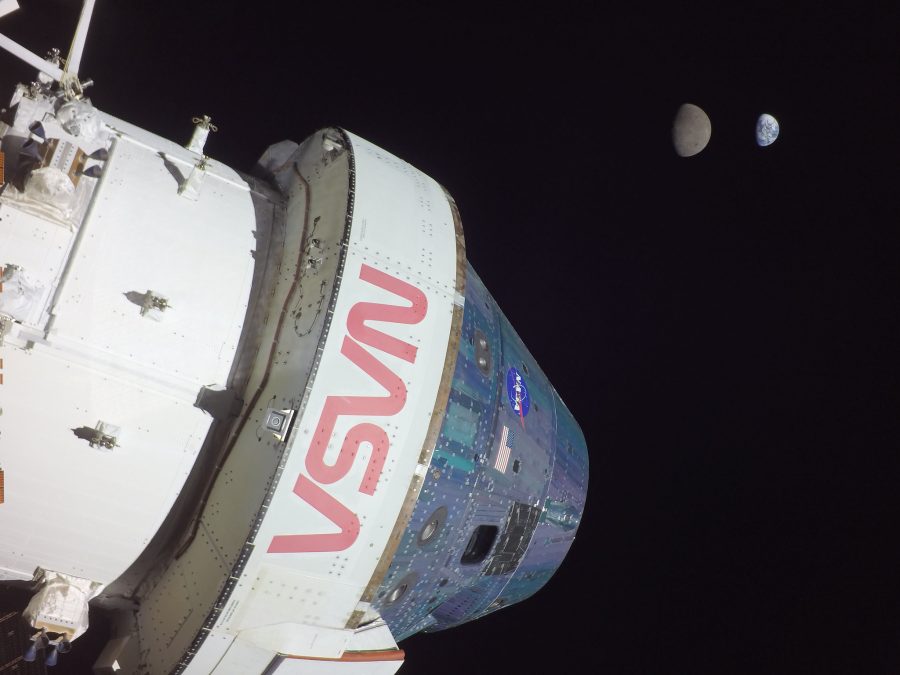- Just two weeks after its launch Orion has travelled further than any spacecraft designed for humans.
- The capsule is currently in distant retrograde orbit where NASA is conducting a series of tests.
- By day 13, NASA said it was in the process of completing 37.5 percent of the tests planned.
The uncrewed Orion spacecraft broke a record this week when it travelled further than a spacecraft designed for humans has travelled before.
The capsule lifted off as part of NASA’s Artemis I mission two weeks ago and reached a maximum distance from Earth of 432 210km this week. The spacecraft is currently in distant retrograde orbit around the Moon where teams back on Earth are conducting a series of tests.
These tests are incredibly important as the next time Orion will be used – which is during the Artemis II mission – a human crew will be onboard.
Tests include assessing thruster jets in different configurations, and the navigation system. A new flight test was added on day 14 of the mission.
“During a majority of the mission, Orion is typically in a tail-to-sun attitude, meaning that the solar arrays face toward the sun to generate power. This flight test objective purposefully orients Orion outside of a perfect tail-to-sun attitude by up to 20 degrees in order to evaluate the spacecraft and gather additional data. Currently, when Orion is out of the tail-to-sun attitude for more than three hours, a ten-hour tail-to-sun recovery period is required. This additional flight test objective will help engineers understand the range of Orion’s thermal performance to incorporate into Artemis II and beyond,” explains NASA.
When it reached its maximum distance from Earth, Orion snapped a photo of itself, the Earth, and the Moon.

Orion is now over halfway done with its round trip from Earth to the Moon and back again. As of day 13 of the mission, NASA reported that 37.5 percent of the test objectives were in the process of being completed. Other tests can only be completed during entry descent, splashdown and recovery of Orion.
On that note, when it returns to Earth, Orion will be hurtling through space at a speed of approximately 32 186kmph. When it hits the atmosphere the spacecraft will need to endure temperatures of up to 2 204 degrees Celsius.
All of this is, as we mentioned, in preparation for Artemis II which will take crew on a similar route to the one Orion is on now. This mission won’t land on the Moon but Artemis III will.
As the future of those missions hinges on the success of this one, NASA is working hard to gather information and conduct all the tests it can.
“Because of the unbelievable can-do spirit, Artemis I has had extraordinary success and has completed a series of history-making events,” NASA Administrator Bill Nelson said in a statement.
“It’s incredible just how smoothly this mission has gone, but this is a test. That’s what we do – we test it and we stress it.”

